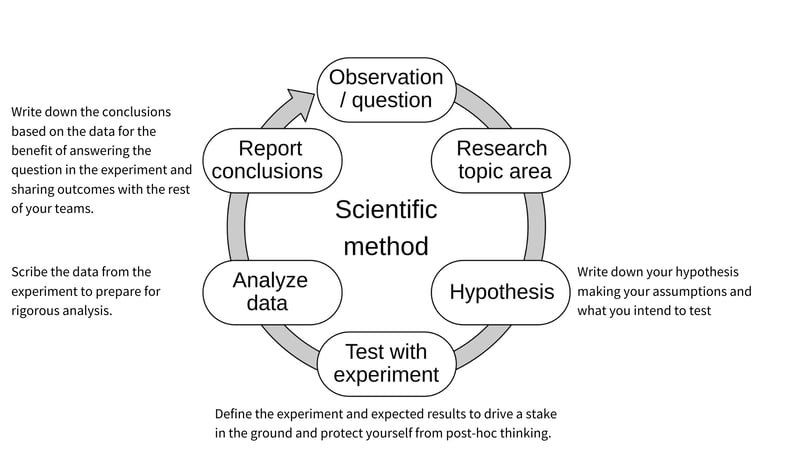This article is the first of a two-part series. Read Part 2 here. Growth is expensive for any...
How to Build an ETS Enterprise with a Growth Mindset
What makes a person get back up no matter what life throws at them?
How is it that every single time they are defeated, they get back up as though nothing actually happened?
Famous Psychologist Dr. Carol Dweck spent her whole life to find the core essence of the spirit of ‘never giving up’ in humans and compiled a theory of the Growth Mindset.
“When you enter a mindset, you enter a new world. In one world—the world of fixed traits—success is about proving you’re smart or talented. Validating yourself. In the other—the world of changing qualities—it’s about stretching yourself to learn something new. Developing yourself.”
Someone with a growth mindset believes they can be better than they are today and is willing to put in the work to achieve this. An individual with this mindset exemplifies resilience. They actively engage in self-reflection, which allows them to adapt to new challenges and take them on as new opportunities for growth.
Mindset For Business Growth
When entrepreneurs decide to create a fast-growing business they need to have a different mindset than those running slow-growing, stable businesses. What’s interesting is that the personal skills and attributes cultivated through a growth mindset are essential to have a mindset for business growth. In this article, we study how you need to cultivate a growth mindset as a prerequisite to developing the right mindset needed to grow your emerging technology services business.
A Greater Vision
Instead of focusing on short-term revenue, an ETS needs to have a focused vision based on a thesis about the future state of the world. Since this is a lone vision that founders have, you must have the optimism to put trust in the opportunity that only your eyes can see. The emerging market can be taken advantage of as you can adapt yourself to the changes and innovative technologies while the rest stubbornly grip onto the obsolete ones.
In this process, you need to focus your business on a tight positioning. You’ll also find yourself saying no to existing business, and you need to manage the fears of scarcity stemming from a fixed mindset to focus on the potential opportunity through a belief in abundance in your abilities to execute your vision.
Forecasting
Once the vision is set, planning to move towards it is the next step. “Plans are worthless but planning is everything.”, Dwight D. Eisenhower on how execution leads to success. This can help gain experience while progressing and also improve the ability to forecast future directions the ETS firm can explore in. To do this you need to be optimistic while staying resilient to failures.
Experimenting
In an early-stage ETS business, there are many unknowns. Norms haven’t been developed for the technology in terms of selling and implementation. The firm itself doesn’t have structures and high growth, continuously making the existing structures insufficient for the near-term needs. For emerging technology, the market is always shifting directions and if there is something that you can offer that is not being capitalized yet, it is important to stick to it and continue to shape it into a business opportunity unique to you and your ETS firm.
In this world, you need to think of your firm as a science lab, experimenting with technologies and services that have not yet been explored commercially, keeping tabs on successfully market-launched products and failures and work environment, etc. Generating feedback loops to ensure the intellectual capital of your team is utilized fully as you learn and adapt yourself to the market opportunity.
Continuous learning from research stages all the way to how they perform is how you keep yourself open to growing. This experimental iteration is a true test of your resilience, more of which is present on our blog.
 Scientific Method via Wikipedia
Scientific Method via Wikipediahttps://en.wikipedia.org/wiki/Scientific_method
Taking Calculated Risks
As you explore the analytics involved with your team's research, you have to take deliberate and purposeful steps towards risks to create further growth opportunities. This also requires monitoring the risks taken and calculating the rewards that came from them. Taking risks can always backfire, but it is important to keep a growth mindset and understand that experiments fail, but there will always be something that can work.
“In one world, failure is about having a setback. Getting a bad grade. Losing a tournament. Getting fired. Getting rejected. It means you’re not smart or talented. In the other world, failure is about not growing. Not reaching for the things you value. It means you’re not fulfilling your potential.”
Late Gratification
As a tech enterprise founder, you need to understand that you'll be spending a lot of money for future growth and you'll have to lean in the present. Practice mindfulness and always refer back to your vision so that you can look forward to getting the fruits of your hard-earned labor at the right time.
Conclusion
While the journey is lonely and challenging for entrepreneurs, a growth mindset can keep your ETS enterprise from becoming outdated. But it all starts with positioning, starting with the vision to take up space in the tech market, correct positioning can anchor you into your place from the get-go. Moving forward with executing long-term goals while anticipating setbacks can open up new doors for opportunities. Young entrepreneurs need to acknowledge that it takes time to grow, however taking the right steps add up to the overall progress.
Starting your journey into emerging technologies is a daunting feat, but if you have a vision, you can attend our webinar in which Aater Suleman, one of the founders of Vixul, can push that vision into a realistic place that you can take within the tech market.
Join us on the 4th of September, 10:00 A.M. CST. Register yourself here.
%20(1).png?width=1600&height=900&name=Webinar%20Banner%20(1600%20x%20900%20px)%20(1).png)






